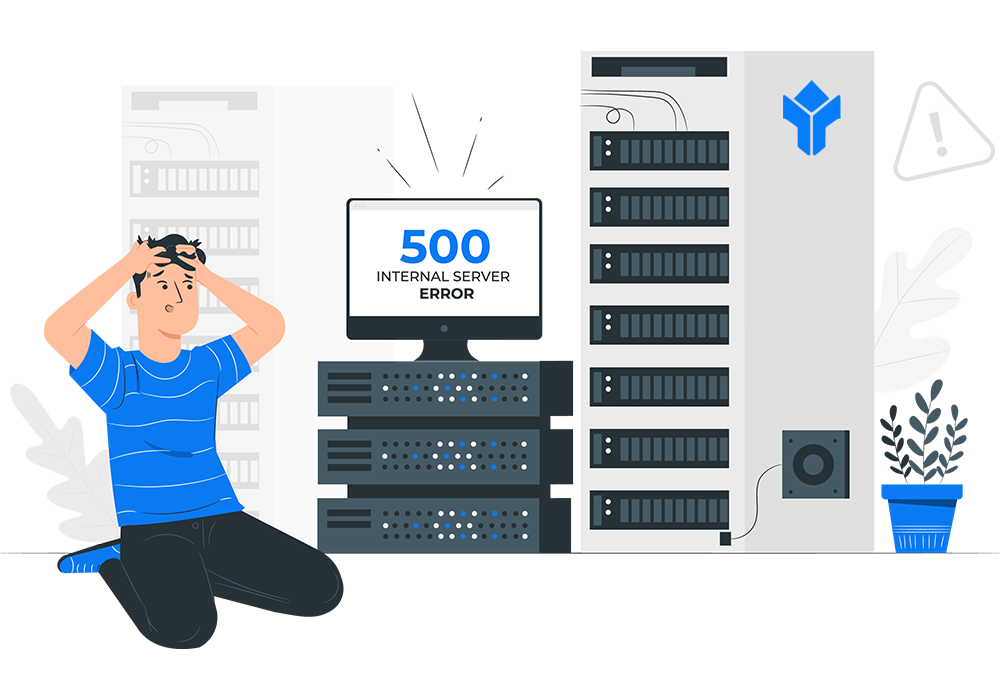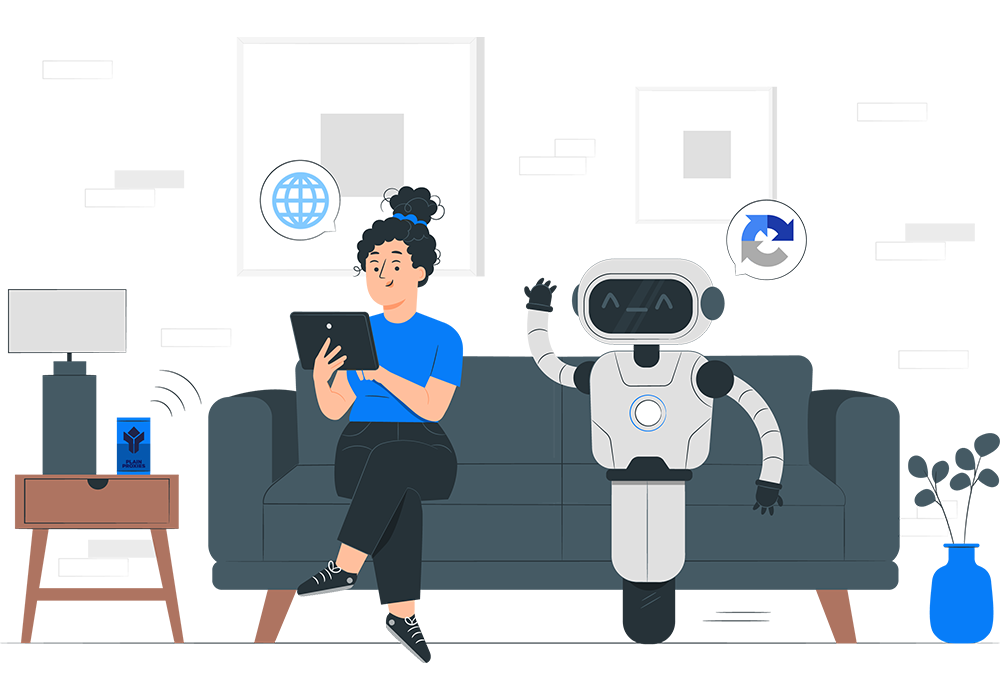IPv6 Proxies vs. IPv4 Proxies: Understanding the Differences
In today's internet-driven world, proxies have become an essential tool for many internet users. A proxy server acts as an intermediary between the user's client computer and the internet. It intercepts the user's requests and forwards them to the internet on their behalf. Proxies are used for various purposes such as to protect privacy, bypass internet restrictions, or improve network performance. IPv4 proxies and IPv6 proxies are the two most common types of proxies used today. In this article, we will discuss the differences between IPv6 proxies and IPv4 proxies and how they affect internet users.
IPv6 Proxy vs. IPv4 Proxy: The Basics
IPv6 proxies and IPv4 proxies are different types of proxy servers that operate using different versions of the Internet Protocol. The Internet Protocol (IP) is the standard protocol used to route data packets between devices on the internet. It provides a unique address for every device connected to the internet, known as the IP address.
IPv4 Proxies
IPv4, the fourth version of the Internet Protocol, is the most widely used version of the protocol. IPv4 addresses consist of 32 bits, which allow for up to 4.3 billion unique addresses. However, due to the rapid growth of the internet, the number of available IPv4 addresses is quickly running out.
IPv4 proxies use these 32-bit IP addresses to route internet traffic through the proxy server. When a user connects to an IPv4 proxy server, the server intercepts their internet requests and forwards them to the internet using one of its own IP addresses. This allows the user to browse the internet anonymously and bypass any IP address blocking that may be in place.
As the number of internet users and devices has grown exponentially in recent years, the limitations of IPv4 have become increasingly apparent. With so many devices connected to the internet, the pool of available IPv4 addresses is quickly running out. In response to this, IPv6 was developed to provide a new and larger address space for the internet.
IPv6 proxies and IPv4 proxies are both used to hide a user's real IP address and provide anonymity while accessing the internet. However, there are some key differences between the two that are important to consider.
IPv6 Proxy
An IPv6 proxy is a proxy server that uses IPv6 addresses to connect to websites on behalf of the user. Since IPv6 provides a larger address space than IPv4, IPv6 proxies can provide many IP addresses to users, which makes it difficult for websites to block access or restrict users based on IP addresses.
IPv6 proxies can be especially useful for users in countries where access to certain websites is blocked or restricted by the government. By connecting to the internet through an IPv6 proxy, users can bypass these restrictions and access the websites they need.
However, not all websites and services support IPv6 addresses yet, which can limit the usefulness of IPv6 proxies in some cases. Additionally, many ISPs and internet service providers have not yet fully implemented support for IPv6, which can make it difficult for users to access the internet through an IPv6 proxy.
Our IPv6 website readiness checker is a simple and easy-to-use tool that allows you to check whether a website is IPv6 ready. To use our tool, simply enter the website URL into the text box and click "Check." Our tool will then analyze the website's configuration and check whether it is ready for IPv6 traffic.
You can find it here: https://plainproxies.com/resources/ipv6-compatibility-checker
IPv4 Proxies
An IPv4 proxy, on the other hand, uses IPv4 addresses to connect to websites on behalf of the user. Since IPv4 provides a limited address space, IPv4 proxies typically use a smaller number of IP addresses to provide anonymity to users.
IPv4 proxies have been widely used for many years and are generally more widely supported than IPv6 proxies. They can be used to bypass IP blocking and provide anonymity to users who wish to access the internet anonymously.
However, since the number of available IPv4 addresses is limited, websites and services can more easily block access to users who are using an IPv4 proxy. Additionally, IPv4 addresses are often shared among multiple users, which can result in collateral damage when one user is blocked or banned.
IP Address Blocking
IP address blocking is a common method used by websites and services to restrict access to users who are using proxies or who are located in a particular country. By blocking access based on IP addresses, websites can restrict access to users who are not authorized to access their content or who are trying to access it anonymously.
However, IP blocking can be a double-edged sword. While it can help to prevent unauthorized access and protect against malicious traffic, it can also limit access for legitimate users and result in collateral damage.
Blocking IP Addresses
Websites and services can block access from specific IP addresses, either by manually entering the IP address into a block list or by using automated tools to detect and block traffic from suspicious IP addresses.
While blocking IP addresses can be an effective way to prevent malicious traffic, it can also result in legitimate users being blocked if they are using an IP address that has been flagged as suspicious. Additionally, IP addresses can be easily changed or spoofed, which means that determined attackers can often find ways to bypass IP blocking.
Network Address Translation

Network Address Translation (NAT) is a technique used to translate private IP addresses into public IP addresses. NAT is commonly used in home and office networks to allow multiple devices to share a single public IP address.
However, NAT can also be used to provide anonymity to users by allowing them to connect to the internet using a shared public IP address. NAT can be used in conjunction with proxies to provide additional anonymity and to make it more difficult for websites and services to identify and block individual users.
Advantages of IPv6 Proxy
Another advantage of IPv6 proxies is that they can provide better network security. The larger address space of IPv6 allows for more unique IP addresses, which can help to prevent IP address collisions and make it more difficult for hackers to launch denial-of-service (DoS) attacks. Additionally, IPv6 proxies can support more advanced security protocols, such as IPsec and TLS, which can encrypt network traffic and protect against data breaches.
On the other hand, IPv4 proxies are still widely used due to their compatibility with many existing systems and devices. Many internet users are still using operating systems and software that only support IPv4, and some websites and services are not yet compatible with IPv6. This means that IPv4 proxies are still a critical tool for accessing certain websites and services.
IPv4 proxies can also be more affordable, as they are more widely available and can be found at low prices. However, this affordability can also lead to collateral damage, as many users may be sharing the same IPv4 address, which can result in the entire IP address being blocked or banned if one user engages in suspicious or malicious activity.
In terms of usage, both IPv4 and IPv6 proxies can be used to connect to websites and services from a different country, bypass IP blocking or restrictions, and protect user privacy by hiding their real IP address. However, IPv6 proxies are better suited for high-speed network access and can provide more reliable and secure connections.
When choosing a proxy service, it is important to consider factors such as device compatibility, network speed, cost, and level of security. Proxy services can vary greatly in terms of the quality of support and the level of security they offer, so it is important to do research and read reviews before choosing a service.
In conclusion, both IPv4 and IPv6 proxies have their own advantages and disadvantages, and the choice between them depends on the specific needs and requirements of the user. While IPv6 proxies offer better security and reliability, IPv4 proxies are still widely used due to their compatibility and affordability. When choosing a proxy service, it is important to carefully consider factors such as device compatibility, network speed, and level of security in order to ensure a safe and reliable internet experience.
IP Rate Limiting
In today's digital age, the internet has become a necessity for individuals and businesses alike. With the increase in internet usage, the demand for IP addresses has skyrocketed. IP addresses are unique identifiers that allow devices to communicate with each other over the internet. The most commonly used versions of IP addresses are IPv4 and IPv6. Both have their advantages and disadvantages, and one of the challenges that network administrators face is ratelimiting.
Ratelimiting is a technique used to prevent abuse or misuse of network resources. It restricts the amount of traffic that can flow between two endpoints in a given time. For instance, if a server receives too many requests from a single IP address, it can ratelimit the requests to prevent the server from becoming overwhelmed.
IPv4 is the fourth version of the Internet Protocol and has been around since the 1980s. It uses a 32-bit address scheme, which allows for approximately 4.3 billion unique addresses. IPv4 is widely used, and most networks today rely on it. However, due to the limited number of addresses, IPv4 has been exhausted, and new addresses are no longer being allocated.
IPv6, on the other hand, is the latest version of the Internet Protocol and was introduced in the 1990s. It uses a 128-bit address scheme, which allows for a virtually unlimited number of unique addresses. IPv6 has been designed to address the shortcomings of IPv4 and to meet the growing demand for IP addresses.
One of the advantages of IPv6 over IPv4 is that it provides improved security. IPv6 has built-in support for IPsec, which provides end-to-end encryption, authentication, and integrity protection. This makes it more difficult for attackers to intercept and tamper with network traffic.
Another advantage of IPv6 over IPv4 is that it provides improved performance. IPv6 reduces the amount of fragmentation that occurs during transmission, which results in faster data transfer speeds. Additionally, IPv6 has a larger maximum transmission unit (MTU), which allows for larger packets to be transmitted without fragmentation.
When it comes to ratelimiting, IPv6 has an advantage over IPv4. IPv6 uses larger block sizes, typically /64, which means that each subnet can accommodate a massive number of IP addresses. This makes it more difficult for attackers to launch distributed denial-of-service (DDoS) attacks or brute-force attacks. With IPv6, attackers would need to use a larger number of unique IP addresses to launch an attack, which is more challenging to accomplish.
IPv4, on the other hand, uses smaller block sizes, typically /24 or /32. This means that each subnet can accommodate a limited number of IP addresses, making it easier for attackers to launch DDoS attacks or brute-force attacks. For instance, if a server receives too many requests from a single IP address, an attacker can easily switch to another IP address within the same subnet to continue the attack.
In addition to the larger block sizes, IPv6 also has a feature called flow labeling. Flow labeling allows network administrators to label and prioritize different types of traffic based on their flow. This means that network administrators can ratelimit or prioritize specific types of traffic, such as video or voice traffic, to ensure that critical applications receive the necessary bandwidth.
Webscraping

Proxies are commonly used to scrape sites as they can mask the IP address of the user and provide access to geo-restricted content. However, they can also be used for malicious purposes such as spamming, scraping large amounts of data, and launching DDoS attacks. Therefore, ratelimiting is a crucial technique used to prevent proxy from abusing network resources.
In the context of scraping, ratelimiting is used to limit the number of requests that a scraper can make within a specific time frame. For instance, if a website receives too many requests from a single IP address, it can ratelimit the requests to prevent the website from becoming overwhelmed. Similarly, proxies can ratelimit the requests made by a scraper to prevent it from abusing network resources.
Proxy servers can implement ratelimiting by using various techniques such as IP-based ratelimiting, user-based ratelimiting, and token-based ratelimiting. IP-based ratelimiting is the most commonly used technique, where the proxy server limits the number of requests made by a specific IP address. This technique can be effective, but it can also be bypassed by attackers using multiple IP addresses or rotating proxies.
User-based ratelimiting is another technique used to limit the number of requests made by a specific user. This technique requires the scraper to authenticate itself using credentials such as a username and password. The proxy server can then limit the number of requests made by the authenticated user. This technique is more effective than IP-based ratelimiting as it can prevent attackers from bypassing the ratelimiting by using multiple IP addresses.
Token-based ratelimiting is a technique where the proxy server issues a token to the scraper, which is used to limit the number of requests made by the scraper. This technique requires the scraper to authenticate itself using credentials, and the proxy server issues a token that is valid for a specific time frame. The scraper can then use the token to make requests, and once the token has expired, the scraper must re-authenticate to receive a new token. This technique is effective in preventing attackers from bypassing ratelimiting by rotating proxies or IP addresses.




Comments